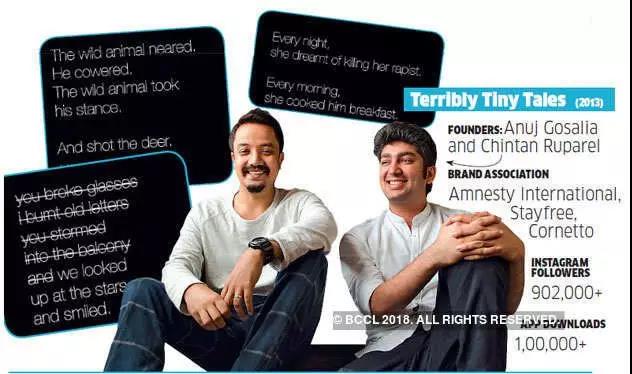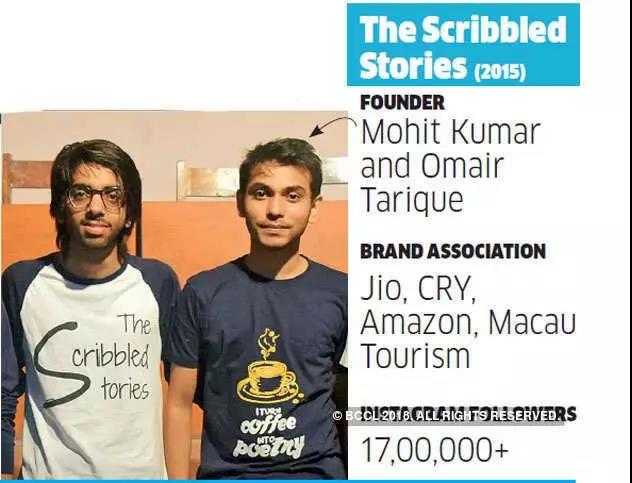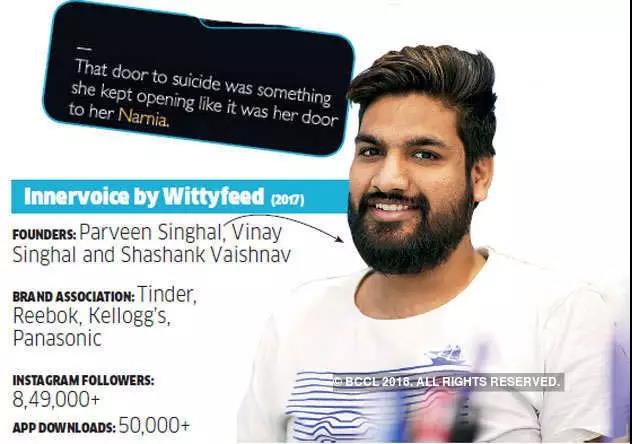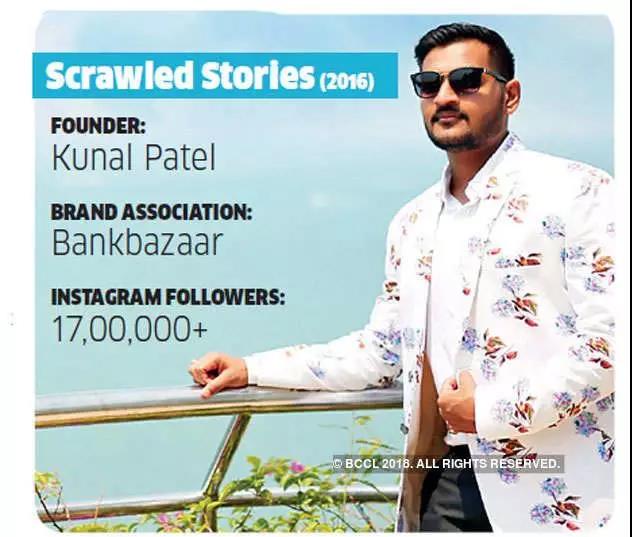On social media platforms such as Instagram and Facebook, the number of fans or stories that are told in about 140 words (in order to match the text or the number of words in Twitter) is attracting more and more fans.

Creative stores and social platforms that meet this need are endless, offering readers a range of works that are internally completed and contributed by readers. Brands that target the user base to millennials are beginning to steer clear of the use of traditional channels to promote and have turned to collaborate with these social platforms.
Even a very short story or a small statement has no doubt a long history. A fictional story makes the world’s most famous micro-story created by Hemingway. It is said that when he had lunch with friends, he bet that he could write a short story in six (English) words. Then he wrote on a paper towel: “Sell: baby shoes, never passed. (For sale; Baby shoes; never worn)”
Undoubtedly, it is very difficult to tell a story in so few languages. Of course, many of the content that appears on popular micro-speaking platforms may make you indifferent, but they occasionally give readers a blow.
The earliest and most popular micro-speaking platform is TTT, which publishes stories on Instagram, Facebook, Twitter and its own app.

TTT was founded on Facebook by a 31-year-old team of 31 authors, Anuj Gosalia, who publishes a micro-story every day. At the time, he operated an advertising company called “Not Like That.” Chintan Ruparel, 30, is one of the team’s screenwriters and became co-founder of the company in 2014.
Ruparel said: “The design of TTT is pure white text on a black background – stand out from the chaotic ‘cat memos and jokes in social media.’” Gosalia saw the potential of the story and decided to open the platform to the audience. They created a URL, and the community user group can submit their work via a URL, and the team plans and publishes the work. Today, TTT has about 903,000 fans on Instagram, 1.1 million fans on Facebook, and more than 100,000 app installs. This information is why famous publishers are willing to work with it.
Instagram currently has many such pages, which are based on user submission and editor management. The scribbled, random scribble stories are among them, and most of the readers are millennials. According to the user data shared by the two-yuan founders, about 55%-65% of the users on Instagram are between 18 and 24 years old.

For marketers, users of this age are also the most elusive. The brand is committed to attracting young people, and in recent years, the younger generation has become particularly difficult to reach due to the indifference to traditional media and any social media platforms used by parents.
This also means the convergence of benefits – the platform has become highly monetizable, and brands like to reach millennials at relatively low cost. But it is as difficult as walking a tightrope. If the user thinks that your purpose is commercial acquisition, then resistance and resistance will follow. Therefore, the advertisements on these platforms also need language, and sometimes they have little in common with traditional advertisements.

Often, the content of a brand’s audience to write their own ads is also part of the promotion. Brand identity may have a rigorous look, but the slogan or brand name in the content is avoidable. Ruparel said: “We will never throw the product directly on people’s faces.”
Mohit Kumar, 19, is one of the partners who founded The Scribbled Stories (TSS) with 20-year-old Omair Tarique. He said that “the brands that openly advertised are actually less involved and less influential. TSS also appears in On Snapchat, the users of the platform platform are mostly teenagers aged 16-19.”
This has become the main source of income for the tiny platform. Depending on the size of the audience and the level of participation, the cost of working with a platform for one month is between Rs 300,000 and Rs 1.2 million (approximately RMB 2.84 million to RMB 94,700).
Gosalia said: “The frosty cream brand Cornetto launched a two-year campaign called “Summer of Love” at TTT, which is a nationwide $1 billion frost cream cylinder. There are 200 micro stories printed on it.”

Big Bazaar, a large consumer goods retailer, also partnered with TTT to launch a fasting event called Neki ka mahina, which produced a series of micro-tales about doing good. According to Yash Sanghvi, marketing manager at Future Group, this is a way to keep young brands such as BigBazaar young and popular. If the story is getting more and more popular, then the same is true for small videos. Both TTT and TSS have a short film department that is responsible for producing brand-related video content.
Ruparel said they think video is a natural extension of text. TTT also shot some intimate self-portrait-style videos in the first person on Instagram’s video platform IGTV.
Most platforms like TTT actually start on Facebook, which has more fans on Facebook than Instagram. But according to all founders, “participation” — the number of people reading and commenting on each post — is much higher than Facebook. For example, a one-line micro-story on the TTT homepage on Instagram—“Bride burns, illuminates another material”—has more than 6,000 likes, while the same content on Facebook has only 150 likes.
Ruparel said Facebook’s appeal lies in that you don’t need to promote your posts to reach a large number of users before the algorithm is running, and it will prioritize friends’ posts over the news page. “So, thank God, Instagram has appeared.”
Small, visually appealing posts like TTT are great for Instagram. However, according to the latest published articles, the number of people reading and commenting on each post is much higher than the latter. Vaishnavi singh, head of content marketing at Penguin Random House, an Indian company, said: “The users of HaikuJAM are already writers or literature lovers, and we have been encouraging new writers and new voices.”
Realizing through these platforms is the next stage of development in this field. Karwa said that he is now shifting from branding to “strategic cooperation” with like-minded brands like Penguin.
TTT and many other platforms now publish longer posts—poetry, short stories, and even letters, although the most influential lines will still appear on the cards. Megha Rao, 22, is a full-time curator and writer for TTT. She said: “Longer reading patterns can give you a more immersive reading experience.” As a publishing writer, she likes TTT because of her. There is no need to tame his work in mental illness or feminism, and this may be something she has to do in mainstream publishing.
Purists may ridicule literary works that are small and lazy, but for fans, it has the same influential influence as long-form literature.
















